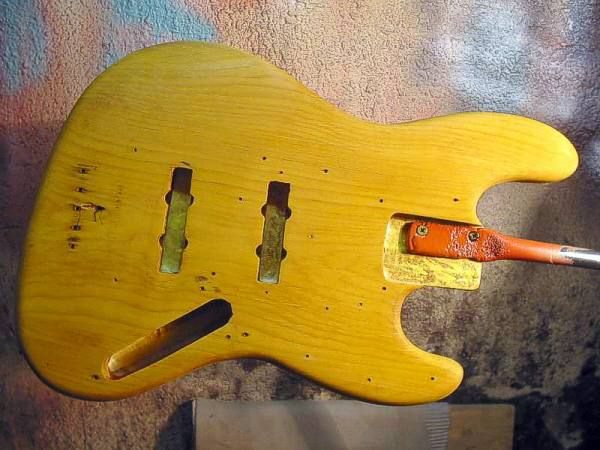

Its dull, medium, and high gloss options give you plenty of versatile options to work. It is much less expensive than varnish, polyurethane, or shellac and also requires less labor to apply. The limited coats help to keep the buildup low and keep the cost down. You don’t have to use more than two coats to enjoy an attractive finish.

It is also a little thinner than other similar products, allowing it to penetrate more deeply and give a durable seal that will keep the wood protected from the inside out. Lacquer stays clear in color for years without any of the yellowing that you often have to worry about with shellac, polyurethane, or varnish. Lacquer is a tough material that is capable of outlasting its competitors without chipping, cracking, or flaking. It is also commonly used to finish wood on musical instruments, coffins, and furniture, though it isn’t often seen in American furniture. Urushiol lacquers are what is used in Eastern Lacquerware, which was popularly traded around the world. This type of lacquer cures through polymerization and oxidation instead of evaporation like chemical solvents. The resin itself has been used as a wood finish for thousands of years, originating in China more than four thousand years ago as a popular plant-based finish for wood. This is the active compound in poison oak and ivy that causes rashes on the skin. Urushiol-based lacquer is a chemical that is naturally located in East Asia in the resin of lacquer trees and wax trees. That said, it is important to know that waterborne lacquers tend to suffer more effects from wear and tear than other types of lacquer. They have fewer hazardous chemicals than most other types of lacquers and are considered to be more environmentally friendly as well as less toxic to the health of the user. Waterborne lacquers act differently than other types of finishes since they have a unique composition. They are usually called conversion varnishes.Ĭatalyzed lacquers are pretty new to the scene and have only become popular in the late 1900s.īefore this, uncatalyzed lacquers like acrylic and nitrocellulose were the mainstream options for woodworkers.Ĭatalyzed lacquers offer fewer finishing problems and increased durability at a similar price as others, making them more popular in recent times. You can also see post-catalyzed lacquers that are made by craftsmen in their shops. Such drying chemicals are typically added by the manufacturer or added during the time of purchase. While the solvents evaporate, the lacquer begins to dry.Ī catalyzed lacquer has chemicals, often some type of acid, that makes the lacquer dry to a more durable, harder finish than evaporation can allow for on its own. Usually, lacquer finishes have solvents that stop the compounds from curing. This means that CAB-acrylic lacquers are not as prone to cracking as others. The most common of this type of finish is called a CAB-acrylic lacquer.ĬAB-acrylic lacquers have CAB, or cellulose acetate butyrate, alongside acrylic resins and tend to be more flexible than conventional lacquers. This allows craftsmen to skirt around the yellowing issues that are commonly found with nitrocellulose lacquers.Īcrylic lacquer also tends to be more scratch-resistant and generally more durable than nitrocellulose lacquer. It contains synthetic acrylic polymers that dry to a smooth ‘water-white’ color. AcrylicĪcrylic lacquer was made in the 1950s and used on lighter woods such as ash, birch, and maple.
#Photo initiater for nitrocelulose lacquer crack#
It is also known to crack when it ages and isn’t very protective against abrasion, chemicals, or liquids. Nitrocellulose lacquers often have an amber-reddish tint to them while they age, offering a nice patina to some wood though it can be unappealing on some others.įor this reason, you won’t see this type of lacquer on lighter wood such as ash or maple due to the yellowing it can cause when it ages. This type of lacquer dries to a high gloss, smooth finish, and is easy to manipulate once it has cured as compared to standard lacquer. It is also a popular product to coat metal and was commonly used in the automotive industry through the mid-1900s. Nitrocelluloseĭeveloped in the 1920s, nitrocellulose lacquer has been the most popular type of finish for musical instruments, especially for pianos, violins, cellos, and guitars.

Though all types of lacquer coating share some similar qualities, some factors also make them different from one another. There are many different types of lacquer wood finishes. Pros and Cons of Lacquer as a Wood Finish.


 0 kommentar(er)
0 kommentar(er)
